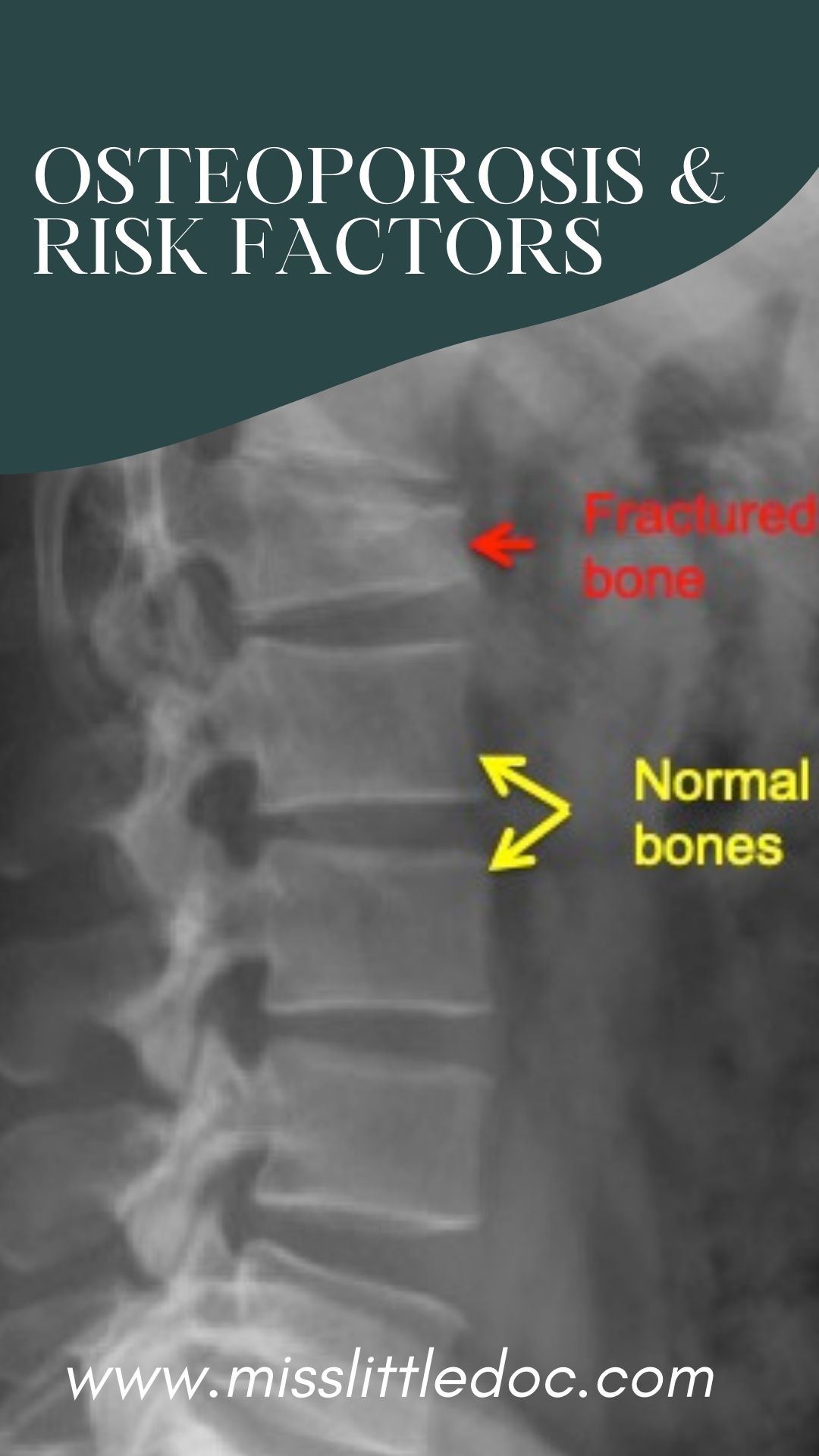Decreased Bone Density
What exactly happens when you get “osteoporotic”? Who ends up with it? Why? How do you prevent it? All great questions! Osteoporosis is super common, mostly in the elderly population, but it can happen in any age if you’re not careful.
Osteoporosis is a bone disease which make bones weak and brittle which causes millions of fractures. Once the bones are weak mild stresses like bending over, picking up too much weight, falling or coughing can cause compression fractures, hip fractures and others. Osteoporosis is on the rise over the last few decades. Maybe due to diet, lack of weight bearing exercises, genes, digestive issues or lack of vitamins and minerals.
Typically people are given a combination of vitamin D and calcium. Although there are several “drugs” you can take, which all have side effects, you can go the medical route as well.
What I would suggest is a combination of vitamins: 2000 IU (or more) of Vitamin D, 680 mg of Strontium Citrate, 100 ug Vitamin K2, and 25 mg of Magnesium a day. Daily weight bearing exercises are ideal, diet with no carbonated beverages, low sugar and low processed foods. Back to the basics, diet is key to how your body will function.
What is Osteoporosis
Osteoporosis related fractures most commonly occur in the hip, wrist or spine and affect men and women of all races. White and Asian women who are past menopause are the highest risk group.
There typically are no symptoms in the early stages of bone loss. But once your bones have been weakened by osteoporosis, you might have signs and symptoms that include:
- Back pain, caused by a fractured or collapsed vertebra
- Loss of height over time
- A stooped posture
- A bone that breaks much more easily than expected
After age 50, one in two women and one in four men will have an osteoporosis-related fracture in their lifetimes. Another 30% have low bone density that puts them at risk of developing osteoporosis. This condition is called osteopenia.

Causes
Your bones are in a constantly regenerating and changing and new bone is made and old bone is broken down. When you’re young, your body makes new bone faster than it breaks down old bone and your bone mass increases. After the early 20s this process slows and most people reach their peak bone mass by age 30. With age, bone mass is lost faster than it’s created, causing a loss in bone mineralization.
Osteoporosis is more common in people who have too much or too little of certain hormones in their bodies. Examples include:
- Sex hormones. Lowered sex hormone levels weaken bones. In the first 10 years of menopause, the body decreases estrogen which protects against bone loss. The fall in estrogen levels in women at menopause is one of the strongest risk factors for developing osteoporosis. Men over the age of 50 are more likely to have a bone break due to osteoporosis than to get prostate cancer. Treatments for prostate cancer that reduce testosterone levels in men and treatments for breast cancer that reduce estrogen levels in women are likely to accelerate bone loss.
- Thyroid problems. Too much thyroid hormone can cause bone loss. This can occur if your thyroid is overactive or if you take too much thyroid hormone medication to treat an underactive thyroid.
- Osteoporosis has also been associated with overactive parathyroid and adrenal glands.
The risk of osteoporosis is higher in people who have:
- Celiac disease
- Inflammatory bowel disease
- Kidney or liver disease
- Cancer
- Multiple myeloma
- Rheumatoid arthritis
- Take Steroids
Some ways to prevent osteoporosis is to get active. Any weight bearing exercise that promotes balance and good posture will benefit your bones. People who sit long periods of time have a higher risk of developing osteoporosis. Drinking just 2 alcoholic drinks a day have shown to deteriorate the bones, as well as, carbonated beverages. Smoking has shown to also increase the risk of osteoporosis.
Another factor is bone structure and body weight. Petite and thin people have a greater risk of developing osteoporosis because they have less bone to lose than people with more body weight and larger frames.
Family history also plays a part in osteoporosis risk. If your parents or grandparents have had any signs of osteoporosis, such as a fractured hip after a minor fall, you may have a greater risk of developing the disease.
Chiropractic
Chiropractic care will get you moving again. Pain associated with any part of the body will slow you down and cause you to “take it easy”. Pain that doesn’t go away will cause you to quit doing the things you use to do. When you have less pain you feel better and can be active again. Adjustments along with diet, supplements and exercise can help protect you later in life.
If you have any questions on how chiropractic can help you, give us or a chiropractor near you a call! A simple blood test can help identify any issues you may be having and can give the chiropractor a good idea on how to start your health journey. Even if you don’t have any pain, a check up with the chiropractor can help you stay feeling good.
~Dr. Lacey~
Carder Chiropractic Clinic, INC.
El Reno, OK 73036



